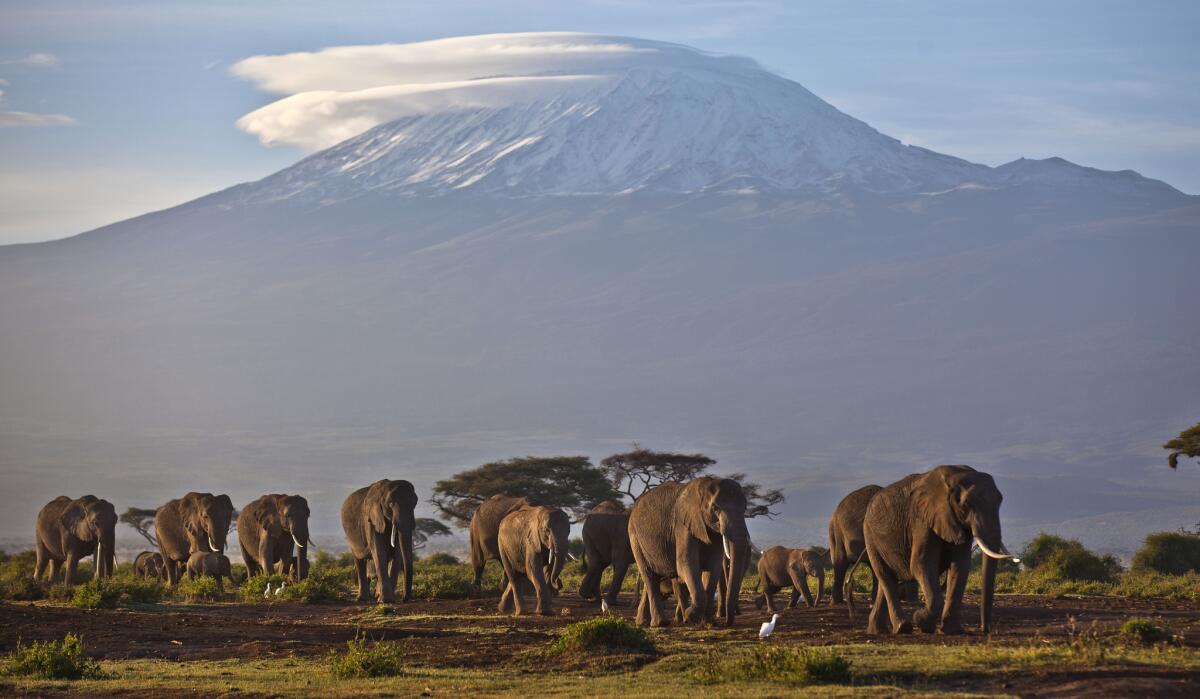Thriving black-market for ivory drives slaughter of African elephants

More than 100,000 African elephants were killed for their tusks during a three-year period, reflecting persistent demand for illegal ivory that threatens the pachyderms’ long-term survival, a conservation study reported this week.
At the pace elephants are being slain, their birth rates are unable to replenish the species, which will lead to population decline, according to the findings published in the Proceedings of the National Academy of Science.
The study report was written by Colorado State University professor George Wittemyer with conservationist colleagues from Save the Elephants, Kenya Wildlife Service and the Convention on the International Trade in Endangered Species.
Among the most disturbing findings of the study was the soaring rate of illegal elephant deaths versus deaths by natural causes, the scientists said.
“Over the last decade, the proportion of illegally killed elephants has climbed from 25% to 60-70%,” said the report.
Researchers compiled the data based on precise monitoring of several elephant populations, like northern Kenya’s Samburu National Rreserve, where every elephant birth and death over the last 16 years has been recorded, Save the Elephants said in a press report on the study.
The dynamics recorded at the closely monitored sites were then extrapolated across African elephant populations, the scientists reported.
Among the more alarming findings, the researchers said, was the decline in the elephant population at Tanzania’s Selous Game Reserve, where the number dropped from 40,000 to 13,000 during the 2010-2012 period studied.
Study co-author Iain Douglas-Hamilton said a reliable estimate of the continent’s elephant population is extremely difficult but accepts an often-cited figure of 400,000 as a reasonable guestimate.
“It’s a complex situation for elephants across Africa, with some populations — such as in Botswana — still increasing,” the Save the Elephants founder said. “History has taught us that numbers alone are no defense against attrition from the illegal ivory trade.”
Elephant poaching is on the rise again after a fairly successful campaign against it aimed at Japanese consumers in the 1970s, Douglas-Hamilton said. The study pointed to the voracious demand for ivory now coming from China.
The Kenyan government last week announced that it was creating a wildlife forensics laboratory to aid in the collection of evidence against poachers. Kenya Wildlife Service Director William Kiprono said that more than 1,300 rangers will be added to guard the reserves by the end of October.
China’s ambassador to Kenya, Liu Xianfa, said his government was also bolstering the fight against elephant killings with a donation of anti-poaching equipment for the Kenya reserves and investment in public education in his homeland to warn Chinese of the consequences of buying illegal ivory.
“Wildlife crimes are a cross-border menace,” Liu was quoted as saying by Kenya’s Capital FM news service.
Tackling the conservation challenge at its economic roots is necessary, the study noted, as black market ivory prices have tripled in less than five years.
“The current demand for ivory is unsustainable. That is our overarching conclusion,” said Douglas-Hamilton. “It must come down. Otherwise the elephants will continue to decrease.”
Follow @cjwilliamslat for the latest international news 24/7
More to Read
Start your day right
Sign up for Essential California for news, features and recommendations from the L.A. Times and beyond in your inbox six days a week.
You may occasionally receive promotional content from the Los Angeles Times.







